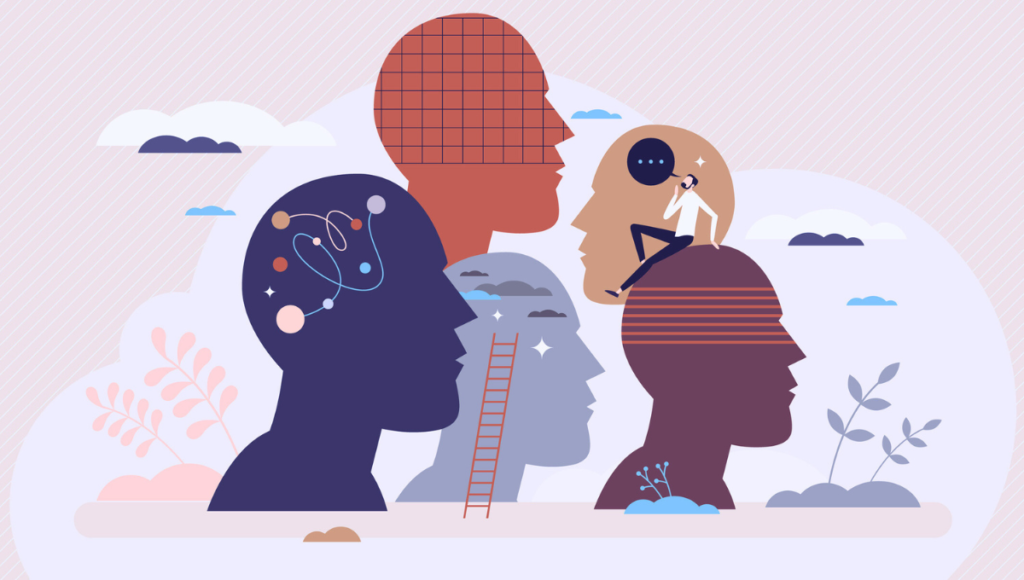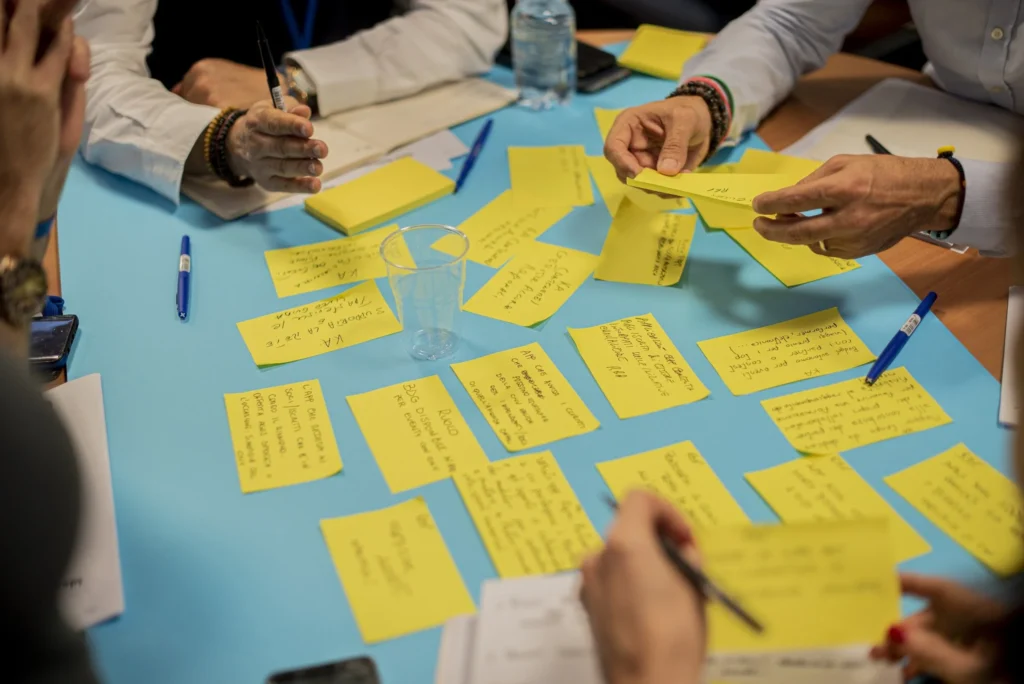Five Ways Workplaces Can Support Inclusion
Globally, 15 to 20 percent of all people are “neurodiverse,” meaning that they fall within a certain group of cognitive profiles (e.g. autism, ADHD, and dyslexia). As awareness of neurodiversity increases, companies and organizations are beginning to understand that in this diversity lies the potential for a great deal of innovation, insight, creativity, and social learning.
Creating workplaces that recognize and affirm neurodiversity is essential to supporting neurodiverse individuals and unlocking innovation and the potential of minds of all kinds.
Barriers to Inclusion
Workplaces are only beginning to adapt to changing ideas about the human brain, and neurodiverse people still face many barriers:
- Globally, over 80 percent of neurodiverse people are under or unemployed.
- Many neurodiverse people with strong qualifications may face barriers at the interview stage, where the emphasis is on behavior and confidence within a biased understanding of social norms.
- When neurodiverse people do get hired, they may face ongoing challenges and bias in their jobs. For example, forty-two percent of people with autism describe experiencing discrimination at work, and many report being exhausted by the ongoing challenges of “masking” their autism in order to fit in at their professional environment.
At the root of discrimination against neurodiverse people is a culture of “ableism” – the prejudiced idea that people with “typical” abilities are superior and that people with disabilities are somehow lesser. Ableism is deeply discriminatory – and pervasive .
Meanwhile, research shows that neurological difference in a context of support is a source of strength or (as one article in the Harvard Business Review termed it) a “competitive advantage.”
So how can workplaces support inclusion for neurodiverse people? Our research suggests five main ways.
Five Ways Workplaces Can Support Inclusion for Neurodiverse People
1. Value the contributions of neurodiverse people. Organizations can celebrate the accomplishments of neurodiverse individuals – both within organizations and in the public arena. As well, organizations should acknowledge neurodiverse people’s unique ways of contributing. Neurodiverse people may offer innovative thinking, in-depth learning and research, and important questions about “the way things have always been done.”
2. Presume competence: People within organizations should not assume that neurodiverse people lack ability; further, they should not make decisions on these people’s behalf. Instead, presume competence, be curious, and ask your neurodiverse colleagues if there are ways you can support them.
3. Challenge assumptions about the meanings of behaviours. Many so-called “neurotypical” people carry a great deal of unconscious bias about what different social behaviours mean. For example, they might assume that a lack of facial expression means a lack of empathy or that a lack of verbal communication means a lack of intelligence. They might assume that a person who is fidgeting is not paying attention. With new understandings of how different brains work differently, colleagues and employers of neurodiverse people must be reflective about how they are interpreting certain behaviours, avoid jumping to conclusions, and work to learn more about how neurological differences present themselves.
4. Use neuro-affirming language: Ableist bias appears in many forms in the day-to-day language within organizations. People may use slurs or conflate disability diagnoses with everyday experiences (e.g. “We’re all a bit ADHD”). People in workplaces need to be aware of the history and implications of their language use (and be ready to accept feedback and keep learning). Most importantly, their language should reflect the reality that people’s brains work differently and that this diversity is valuable.
5. Examine workplace practices and contexts: Organizations can assess how to make the daily operations of organizations more inclusive of neurodiversity. For example, meetings can start and end on time and include breaks, and communication around meeting topics can happen in different ways and at different times (e.g. providing agendas in advance to support preparation and allowing people time after meetings to reflect and follow up). Stimuli in work environments may be reduced. Overall, it is important to ask what people need and to remember that changes made to support neurodiverse individuals can often make workplaces more inclusive for all.
A Time for Learning
Organizations of all kinds are beginning to understand the need to challenge longstanding biases about cognition and social behaviour in order recognize the contributions of neurodiverse people.
Other changes – such as in recruitment – are beginning, too. Some organizations are emphasizing a “strength-based” approach to their hiring of neurodiverse employees; for example, the consultancy EY Canada is developing “Neurodiversity Centres of Excellence” to support recruitment of neurodiverse individuals. For example, these centres have worked with the National Bank of Canada to develop a “customized recruitment process” to attract neurodiverse professionals to its team of data scientists.
Within this broader wave of change, we can all play a role in challenging ableism by reevaluating assumptions, learning from the experiences shared by neurodiverse people, and continuously reevaluating our workplaces to make them better, safer places for people whose minds work in all different kinds of ways.
Further Resources
How to ADHD (YouTube Channel)
https://www.youtube.com/c/HowtoADHD/featured
The Loudest Girl in the World (Podcast)
https://www.pushkin.fm/podcasts/loudest-girl-in-the-world
ADDitude: Covering ADHD and Related Conditions (Online Magazine & Print Magazine)
The Dyslexic Advantage, updated 2023 edition soon to be released
This article is based on the “Inclusive Work Environments for a Neurodiverse World” presentation delivered October 2022 by Shalyma Cambridge, Facilitator, Inclusivity with contributions from Kathleen Oliphant, Research Consultant, Inclusivity and Wyle Baoween, CEO and Moderator, Inclusivity. The full recording of the presentation is available here.
Sources:
Robert D. Austin and Gary P. Pisano. 2017. Neurodiversity as a Competitive Advantage. Harvard Business Review. https://hbr.org/2017/05/neurodiversity-as-a-competitive-advantage
Deloitte. n.d. Embracing Neurodiversity at Work: How Canadians With Autism Can Help Help Employers Close the Talent Gap. https://www2.deloitte.com/content/dam/Deloitte/ca/Documents/fcc/ca-canada-2030-policy-brief-aoda-en.pdf?icid=untapped-fcc-latest-en
Mary Theresa Bitti, 2022. How Neurodiverse Perspectives Can Help Fuel Innovation. May 16, 2022. FInancial Post.
Bernard Grant, 2022. What Does a Neuro-Divergent Inclusive Workplace Look Like?” Best Colleges. https://www.bestcolleges.com/careers/neurodivergent-inclusive-workplace/
Victoria McQueen, 2022. EY Expands Neurodiversity Centres of Excellence in Canada. EY Canada. https://www.ey.com/en_ca/news/2022/09/ey-expands-neurodiversity-centres-of-excellence-in-canada
National Bank, 2022. National Bank Works with EY Canada to Support Neurodiversity in the Workplace. https://www.nbc.ca/about-us/news-media/press-release/2022/20220401-La-BNC-et-EY-font-la-promotion-de-la-neurodiversite.html
Alisha S. Richmond. 2022. About Us: Specialisterne. https://ca.specialisterne.com/aboutus/






















